2019-01-03 - Nº 192
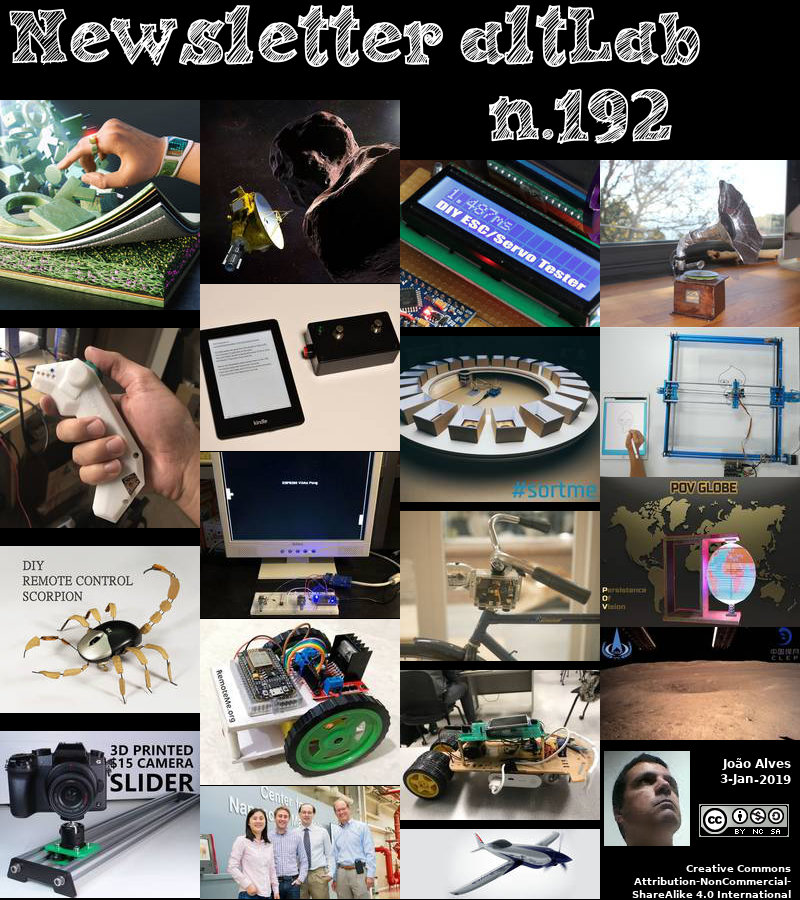
Editorial
Esta é a Newsletter Nº 192 que se apresenta com o mesmo formato que as anteriores. Se gostar da Newsletter partilhe-a!
Todas as Newsletters encontram-se indexadas no link.
Esta Newsletter tem os seguintes tópicos:
Faz hoje anos que nascia, em 1823, Robert Whitehead. Este engenheiro britânico foi responsável pela invenção do torpedo moderno. O seu primeiro torpedo não tinha velocidade nem alcance. No entanto, em 1870 ele conseguiu aumentar a sua velocidade para 7 nós e agora conseguia atingir um alvo a cerca de 600 metros de distância. No ano seguinte, a marinha britânica comprou a invenção de Whitehead. Embora um torpedo de mastro, uma carga ligada a um longo mastro e carregado por um pequeno barco, tivesse sido usado durante a Guerra Civil Americana, Robert Whitehead foi o primeiro a produzir um torpedo auto-propulsionado. O torpedo de Whitehead era impulsionado por um motor de ar comprimido, carregado com 8 quilos de dinamite. A sua característica mais importante era um dispositivo auto-regulador que mantinha o torpedo a uma profundidade predefinida constante. Edison fez um filme de um lançamento de torpedo de Whitehead (1900).
Faz também anos hoje que nascia, em 1906, William Wilson Morgan. Este astrônomo norte-americano, em 1951, forneceu a primeira evidência de que a galáxia da Via Láctea possui braços espirais. Ele passou toda a sua carreira no Observatório Yerkes, incluindo três anos como diretor. Evitando a teoria, sua pesquisa foi dedicada à morfologia, a classificação dos objetos por sua forma e estrutura. Com Keenan e Kellman, ele introduziu classes de luminosidade estelar e a classificação bidimensional de espectros estelares estritamente baseada nos próprios espectros. Com Osterbrock e Sharpless, ele demonstrou a existência de braços espirais na Galáxia usando distâncias precisas de estrelas O e B obtidas a partir de classificações espectrais. Morgan inventou o sistema UBV de magnitudes e cores.
Por fim, faz anos hoje que nascia, em 1929, Gordon Moore. Este engenheiro norte-americano ficou conhecido por ser co-fundador e presidente da Intel. Tendo começado a sua carreira na Shockley Semiconductor Laboratory passou pela Fairchild Semiconductor Laboratory e por fim, em 1968 fundou com Robert Noyce a NM Electronics que mais tarde se chamaria de Intel Corporation. Foi ele que enunciou num paper que publicou a famosa Lei de Moore. Esta definia que o número de transístores dos chips teria um aumento de 100%, pelo mesmo custo, a cada período de 18 meses. Como o custo do computador para o consumidor cai, o custo para os produtores cumprirem a lei de Moore segue uma tendência oposta: os custos de R & D, manufatura e teste aumentaram de forma constante com cada nova geração de chips. O aumento dos custos de fabricação é uma consideração importante para a sustentação da lei de Moore. Isto levou à formulação da segunda lei de Moore, também chamada de lei de Rock, segundo a qual o custo de capital de uma fábrica de semicondutores também aumenta exponencialmente ao longo do tempo.
Nesta semana que passou a NASA informou que às 14h43 EST em 31 de dezembro, enquanto muitos na Terra se preparavam para receber o Ano Novo, a nave espacial OSIRIS-REx da NASA, a 110 milhões de quilómetros de distância, realizou uma queima de oito segundos de seus propulsores - e bateu um recorde da exploração espacial. A nave entrou em órbita ao redor do asteroide Bennu e transformou Bennu no menor objeto a ser orbitado por uma nave. O grande objectivo desta missão é recolher amostras do asteroide e trazê-las para a Terra.
Esta quinta-feira a China tornou-se no primeiro país a aterrar uma sonda no lado mais afastado da Lua, a Chang’e-4, informou a televisão estatal. A sonda com o nome da deusa chinesa da Lua, pousou no satélite natural da Terra, na cratera Von Kármán às 03:26 de Lisboa. A sonda permanecerá estacionária na superfície em uma região conhecida como bacia do Pólo Sul – Aitken. No entanto, ela também carrega um rover de seis rodas que os cientistas chineses usarão para explorar o outro lado da lua. O rover mede 1 metro de diâmetro e pesa 140 kg, significativamente menor do que o Curiosity da NASA, baseado em Marte. O tempo de vida esperado do projeto é de três meses, e o objetivo é verificar o crescimento de plantas e captar sinais de radiofrequência, normalmente bloqueados pela atmosfera terrestre.
Na Newsletter desta semana apresentamos diversos projetos de maker assim como alguns modelos 3D que poderão ser úteis.
 João Alves ([email protected])
João Alves ([email protected])
O conteúdo da Newsletter encontra-se sob a licença  Creative Commons Attribution-NonCommercial-ShareAlike 4.0 International License.
Creative Commons Attribution-NonCommercial-ShareAlike 4.0 International License.
Novidades da Semana
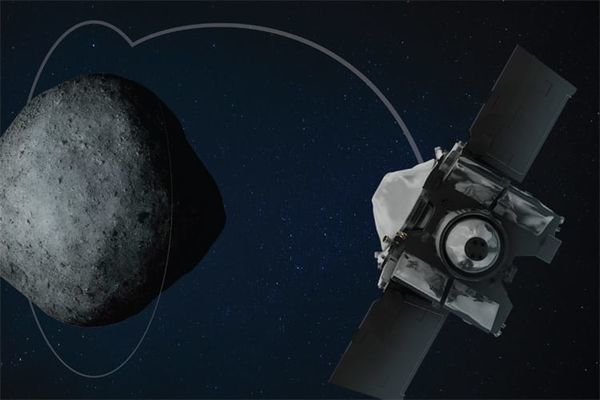
NASA's OSIRIS-REx Spacecraft Enters Close Orbit Around Bennu, Breaking Record
"At 2:43 p.m. EST on December 31, while many on Earth prepared to welcome the New Year, NASA’s OSIRIS-REx spacecraft, 70 million miles (110 million kilometers) away, carried out a single, eight-second burn of its thrusters – and broke a space exploration record. The spacecraft entered into orbit around the asteroid Bennu, and made Bennu the smallest object ever to be orbited by a spacecraft. “The team continued our long string of successes by executing the orbit-insertion maneuver perfectly,” said Dante Lauretta, OSIRIS-REx principal investigator at the University of Arizona, Tucson. “With the navigation campaign coming to an end, we are looking forward to the scientific mapping and sample site selection phase of the mission.” Lauretta, along with his team, spent the last day of 2018 with his feet planted on Earth, but his mind focused on space. “Entering orbit around Bennu is an amazing accomplishment that our team has been planning for years,” Lauretta said. Inching around the asteroid at a snail’s pace, OSIRIS-REx’s first orbit marks a leap for humankind." [...]
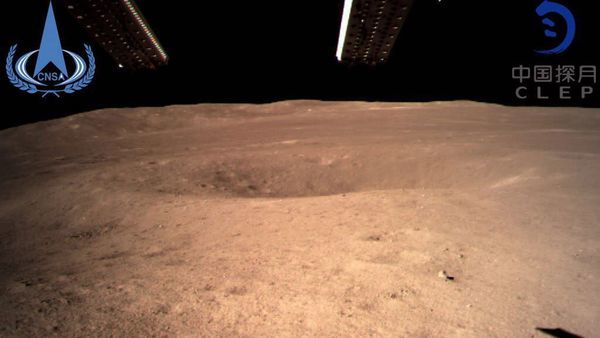
China's Chang'e-4 probe soft-lands on moon's far side
"China's Chang'e-4 probe touched down on the far side of the moon Thursday, becoming the first spacecraft soft-landing on the moon's uncharted side never visible from Earth. The probe, comprising a lander and a rover, landed at the preselected landing area on the far side of the moon at 10:26 a.m. Beijing Time, the China National Space Administration announced. " [...]
Outras Notícias

NASA spacecraft completes farthest flyby in history. What's next?
"Scientists at last have their first good look at a primordial piece of the solar system orbiting more than four billion miles away. On the final evening of 2018, the biggest New Year's Eve party in the solar system unfolded across four billion miles of space. At 12:33 a.m. ET on January 1, NASA's New Horizons probe flew by a small lump of rock and ice called 2014 MU69. Also nicknamed Ultima Thule (UL-tee-ma TOO-le), it's now the most distant, and most primitive, place ever visited by humans. Due to the vast distance messages must travel between Earth and the spacecraft, members of the New Horizons team didn't immediately know for sure whether the flyby was successful." [...]

USB-IF Launches USB Type-C Authentication Program
"USB Implementers Forum (USB-IF), the support organization for the advancement and adoption of USB technology, today announced the launch of its USB Type-C™ Authentication Program, marking an important milestone for the optional USB security protocol. The USB Type-C Authentication specification defines cryptographic-based authentication for USB Type-C chargers and devices. USB Type-C Authentication empowers host systems to protect against non-compliant USB chargers and to mitigate risks from malicious firmware/hardware in USB devices attempting to exploit a USB connection. Using this protocol, host systems can confirm the authenticity of a USB device, USB cable or USB charger, including such product aspects as the capabilities and certification status. All of this happens right at the moment a connection is made – before inappropriate power or data can be transferred. “USB-IF is excited to launch the USB Type-C Authentication Program, providing OEMs with the flexibility to implement a security framework that best fits their specific product requirements,” said USB-IF President and COO Jeff Ravencraft." [...]
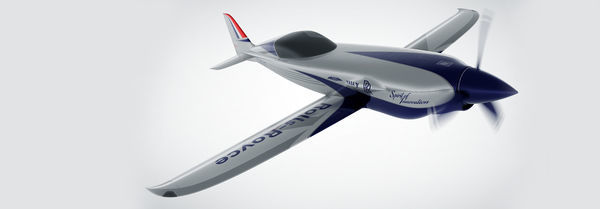
Introducing ACCEL - The world's fastest electric-powered aeroplane
"Rolls-Royce is leading a highly specialised challenge to build the world’s fastest all-electric aircraft This zero-emissions plane is expected to make a run for the record books with a target speed of 300+ MPH (480+ KMH). Inside a bustling hangar bay at the far end of Gloucestershire airport in South West England, a team of British engineers, designers, and data specialists recruited from across Rolls-Royce and beyond have set out to make history. They’re building a high-performance electric aeroplane unlike anything the world has ever seen. Scheduled to take to the skies over Great Britain in 2020, the aircraft will reach a speed of 300 mph – and quite likely more – making it the fastest all-electric plane in history. This run for the record books is no stunt. It’s part of a Rolls-Royce initiative called ACCEL – short for “Accelerating the Electrification of Flight” – that’s intended to pioneer a third wave of aviation in support of Rolls-Royce’s strategy to champion electrification." [...]

World-first autonomous trains deployed at Rio Tinto's iron ore operations
"Rio Tinto has successfully deployed AutoHaul™, establishing the world’s largest robot and first automated heavy-haul, long distance rail network. Since completing the first loaded run in July, Rio Tinto has steadily increased the number of autonomous journeys across its world-class iron ore operations in Western Australia in a controlled and safe manner, with over 1 million kilometres now travelled autonomously. Rio Tinto Iron Ore managing director Rail, Port & Core Services Ivan Vella said “The safe and successful deployment of AutoHaul™ across our network is a strong reflection of the pioneering spirit inside Rio Tinto. It’s been a challenging journey to automate a rail network of this size and scale in a remote location like the Pilbara, but early results indicate significant potential to improve productivity, providing increased system flexibility and reducing bottlenecks.” Over the coming months we will continue to refine our autonomous operations to ensure we are able to maximise value. We continue to work closely with drivers during this period and do not expect to make any redundancies in 2019 as a result of the deployment of AutoHaul™. Notes to editors The $940 million AutoHaul™ programme is focused on automating trains transporting iron ore to Rio Tinto’s port facilities in the Pilbara region of Western Australia." [...]
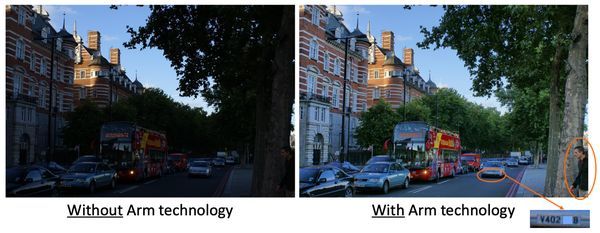
A sharper digital eye for intelligent devices with the latest Arm ISP technology
"New Arm Mali-C52 and Mali-C32 image signal processors (ISPs) provide class-leading image quality, a complete software package, and full set of calibration and tuning tools Higher image quality in a wide range of everyday devices including drones, smart home assistants and security, and internet protocol (IP) cameras New applications can now take advantage of the unique capabilities of Arm Iridix technology, proven in more than two billion devices today Of all our five senses, sight is the most evolved and richest sense, and for decades the digital world has strived to exceed our own visual processing capabilities which are enabled by 2 million-plus nerve fibers from the retinas into the brain. Creating “digital eyes” for processing real-time higher-quality images to give viewers the truest sense of an environment is among the many challenges faced by the Arm ecosystem, which is working towards enabling a trillion connected devices. In fact, according to our estimates, demand for IoT devices with embedded vision capabilities are among the highest across connected devices: The security (surveillance) and IP camera market is on pace for an annual growth rate of 20% through to 2021 reaching over 500 million shipped units; Personal robots are growing at a staggering 75% y-o-y rate and are expected to reach 2 million units shipped in 2021; The smart home market is growing at 14% y-o-y to 88 million in 2021, and other devices like drones, augmented reality (AR)/ mixed reality (MR) equipment and action cameras are shifting from emerging to widely adopted in terms of market category In response to the demand for real-time higher image quality in those devices, today Arm is announcing a new generation of image signal processors (ISPs), the Arm Mali-C52 and Mali-C32 ISPs. Translating perception into pixels A critical aspect of image technology used in the aforementioned devices is the ISP technology embedded within each of them. In these constrained devices, the key function of an ISP is to deliver the most accurate and highest image quality when pulling data from an image sensor and processing each pixel, particularly where machine learning is involved. The new Arm Mali-C52 and Mali-C32 apply over twenty-five processing steps to each pixel, of which three critical ones deliver key differentiation in terms of image output quality." [...]

Scratch 3.0 is here!
"Hi folks! It’s here! We are excited to let you know that Scratch 3.0 has launched! As of today, Scratch 3.0 has officially become part of the Scratch Online Community (scratch.mit.edu). With the introduction of Scratch 3.0 comes lots of exciting new features. There are dozens of new sprites, backgrounds, and sounds for you to play with." [...]

FreeBSD 12.0-RELEASE Announcement
"The FreeBSD Release Engineering Team is pleased to announce the availability of FreeBSD 12.0-RELEASE. This is the first release of the stable/12 branch. Some of the highlights: OpenSSL has been updated to version 1.1.1a (LTS). Unbound has been updated to version 1.8.1, and DANE-TA has been enabled by default. OpenSSH has been updated to version 7.8p1. Additonal capsicum(4) support has been added to sshd(8)." [...]
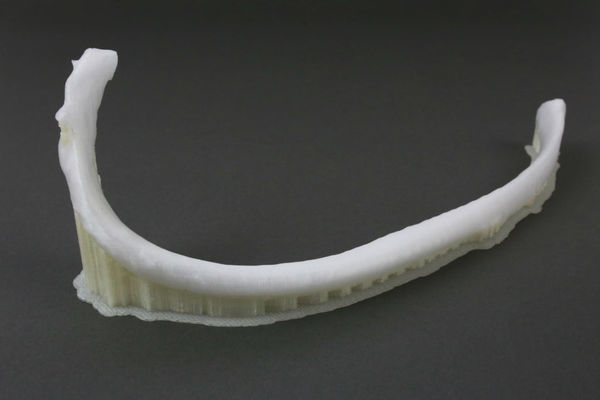
3D printed rib implanted in the human body
"Innovative surgery for the world of medicine was performed in Bulgaria. In November cardiac surgeons at the clinic in Sofia implanted a rib that was made on a 3DGence 3D printer. This is one of the first case in the world. Medical 3D printing A team of doctors from the Tokuda Hospital applied an innovative method of replacing neoplastically changed bones in the treatment of a 35-year-old patient, who had a tumor formation in the rib. Ivaylo Josifov has been actively involved in the sport for many years and has never had any health problems before. During tonsillitis, the doctors controlled the patient’s referral to lung X-rays." [...]
Ciência e Tecnologia
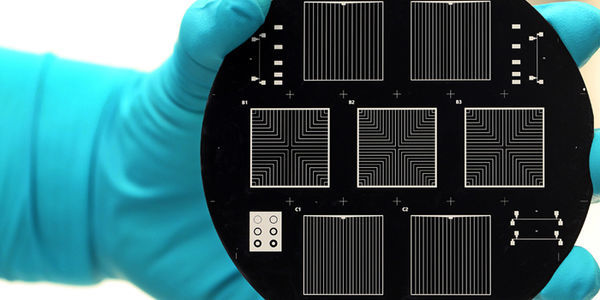
Tandem solar cells must be efficient and sustainable
"Major research collaboration to break the barrier for how much energy a sustainable tandem solar cell can produce. At the same time, toxic and rare materials will be replaced with sustainable alternatives. Over the past decade, solar cells have become better and cheaper. Cheaper because mass production in the East has pushed down prices. Better because researchers and businesses have improved the technology to optimize the amount of energy extracted per hour of sunshine. So does it even make sense to continue conducting research into solar cell technology?" [...]
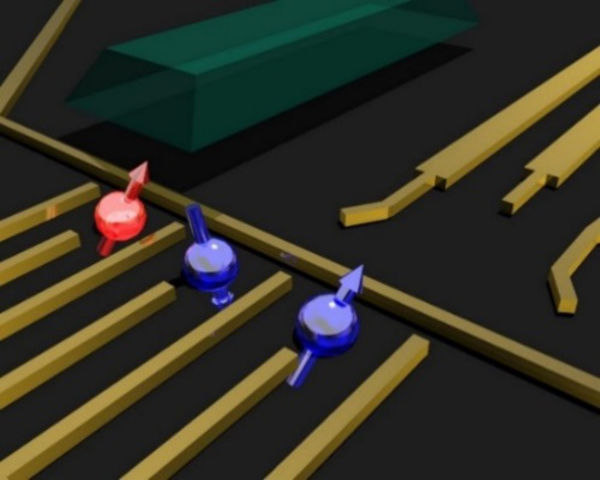
Hybrid qubits solve key hurdle to quantum computing
"Spin-based quantum computers have the potential to tackle difficult mathematical problems that cannot be solved using ordinary computers, but many problems remain in making these machines scalable. Now, an international group of researchers led by the RIKEN Center for Emergent Matter Science have crafted a new architecture for quantum computing. By constructing a hybrid device made from two different types of qubit—the fundamental computing element of quantum computers—they have created a device that can be quickly initialized and read out, and that simultaneously maintains high control fidelity. In an era where conventional computers appear to be reaching a limit, quantum computers—which do calculations using quantum phenomena—have been touted as potential replacements, and they can tackle problems in a very different and potentially much more rapid way. However, it has proven difficult to scale them up to the size required for performing real-world calculations. In 1998, Daniel Loss, one of the authors of the current study, came up with a proposal, along with David DiVincenzo of IBM, to build a quantum computer by using the spins of electrons embedded in a quantum dot—a small particle that behaves like an atom, but that can be manipulated, so that they are sometimes called “artificial atoms.” In the time since then, Loss and his team have endeavored to build practical devices." [...]
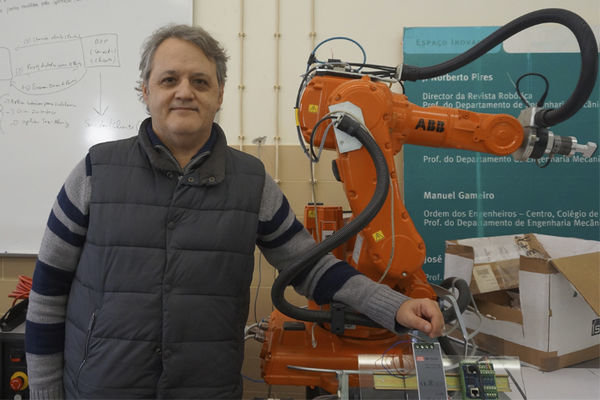
Scientists from Portugal and Norway develop new generation of 3D printing for industry
"(Translated with Google Translate) For the first time, a team of researchers from the Faculty of Sciences and Technology of the University of Coimbra (FCTUC) and the Norwegian Technological Institute for Industry (SINTEF) developed a robotic 3D printing system with 6 axes of movement, enabling the printing of large metal parts at various angles and planes. The technology, which has already had the interest of Indian multinational Tata Steel, one of the largest metal suppliers in the world, represents a new generation of industry-wide 3D printing using large metal materials (eg aeronautics industry and oil), with significant impacts on the reduction of production time and costs. The great added value of this new robotic system, in addition to making it possible to double the performance of traditional 3D printers (using 3 axes), is its flexibility, allowing to couple a set of tools never before achieved, especially a software of simulation in time real. "The ability to simulate the process in real time, that is, the simulation is done at the same time as the printing of the part, is of extreme importance, because it leads to great facilities throughout the production. Simultaneous simulation, which covers several variables and parameters (hardness, temperature, phase changes in the material, etc. ), can immediately correct any anomalies that may arise." [...]
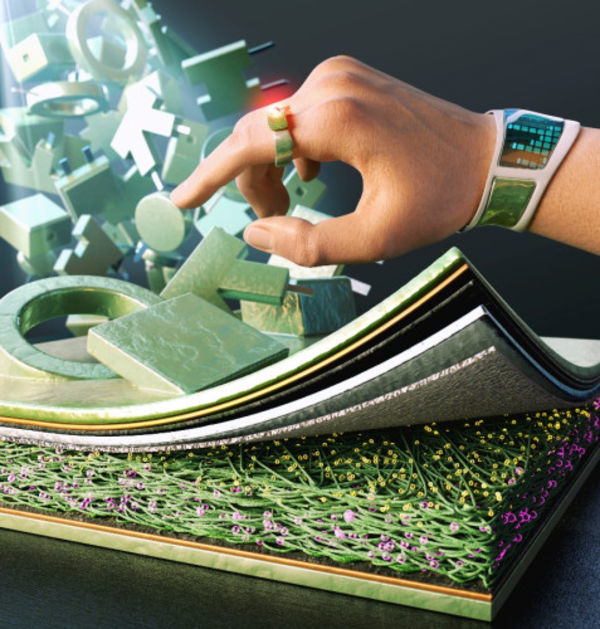
Fabrication of Shape-conformable Batteries Based on 3D-printing Technology
"Flexible, wireless electronic devices are rapidly emerging and have reached the level of commercialization; nevertheless, most of battery shapes are limited to either spherical and/or rectangular structures, which results in inefficient space use. Professor Il-Doo Kim’s team from the Department of Materials Science at KAIST has successfully developed technology to significantly enhance the variability of battery design through collaboration research with Professor Jennifer A. Lewis and her team from the School of Engineering and Applied Sciences at Harvard University. Most of the battery shapes today are optimized for coin cell and/or pouch cells. Since the battery as an energy storage device occupies most of the space in microelectronic devices with different designs, new technology to freely change the shape of the battery is required. The KAIST-Harvard research collaboration team has successfully manufactured various kinds of battery shapes, such as ring-type, H, and U shape, using 3D printing technology. And through the research collaboration with Dr. Youngmin Choi at the Korea Research Institute of Chemical Technology (KRICT), 3D-printed batteries were applied to small-scale wearable electronic devices (wearable light sensor rings)." [...]

Electronics of the future: A new energy-efficient mechanism using the Rashba effect
"Scientists at Tokyo Tech proposed new quasi-1D materials for potential spintronic applications, an upcoming technology that exploits the spin of electrons. They performed simulations to demonstrate the spin properties of these materials and explained the mechanisms behind their behavior. Conventional electronics is based on the movement of electrons and mainly concerns their electric charge; unfortunately, we are close to reaching the physical limits for improving electronic devices. However, electrons bear another intrinsic quantum-physical property called "spin", which can be interpreted as a type of angular momentum and can be either "up" or "down". While conventional electronic devices do not deploy the spin of the electrons that they employ, spintronics is a field of study in which the spin of the conducting electrons is crucial. Serious improvements in performance and new applications can be attained through "spin currents"." [...]

Give It the Plasma Treatment: Strong Adhesion without Adhesives
"Polymers containing plastics are essential in modern life. Being lightweight, strong and unreactive, a vast range of technologies depend on them. However, most polymers do not adhere naturally to other materials, so they need adhesives or corrosive chemical treatments to be attached to other materials. This is a problem in areas like food and medicine, where contamination must be avoided at all costs. A clean way to make industrial polymers adhesive is urgently needed. Now, a team at Osaka University has achieved just that." [...]

Deep learning turns mono recordings into immersive sound
"We’ve had 3D images for decades, but effectively imitating 3D sound has always eluded researchers. Now a machine-learning algorithm can produce “2.5D” sound by watching a video. Listen to a bird singing in a nearby tree, and you can relatively quickly identify its approximate location without looking. Listen to the roar of a car engine as you cross the road, and you can usually tell immediately whether it is behind you. The human ability to locate a sound in three-dimensional space is extraordinary. The phenomenon is well understood—it is the result of the asymmetric shape of our ears and the distance between them." [...]

Precision experiment first to isolate, measure weak force between protons, neutrons
"A team of scientists has for the first time measured the elusive weak interaction between protons and neutrons in the nucleus of an atom. They had chosen the simplest nucleus consisting of one neutron and one proton for the study. Through a unique neutron experiment at the Department of Energy’s Oak Ridge National Laboratory, experimental physicists resolved the weak force between the particles at the atom’s core, predicted in the Standard Model that describes the elementary particles and their interactions. Their result is sensitive to subtle aspects of the strong force between nuclear particles, which is still poorly understood. The team’s observation, described in Physical Review Letters, culminates decades of work performed with an apparatus known as NPDGamma. The first phase of the experiment took place at Los Alamos National Laboratory." [...]
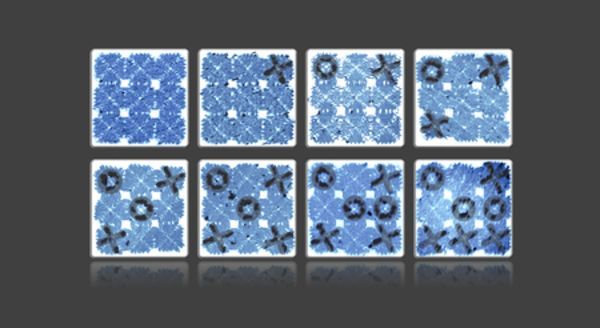
Researchers Make World's Smallest Tic-Tac-Toe Game Board with DNA
"Move over Mona Lisa, here comes tic-tac-toe. It was just about a year ago that Caltech scientists in the laboratory of Lulu Qian, assistant professor of bioengineering, announced they had used a technique known as DNA origami to create tiles that could be designed to self-assemble into larger nanostructures that carry predesigned patterns. They chose to make the world's smallest version of the iconic Mona Lisa. The feat was impressive, but the technique had a limitation similar to that of Leonardo da Vinci's oil paints: Once the image was created, it could not easily be changed. Now, the Caltech team has made another leap forward with the technology. They have created new tiles that are more dynamic, allowing the researchers to reshape already-built DNA structures." [...]
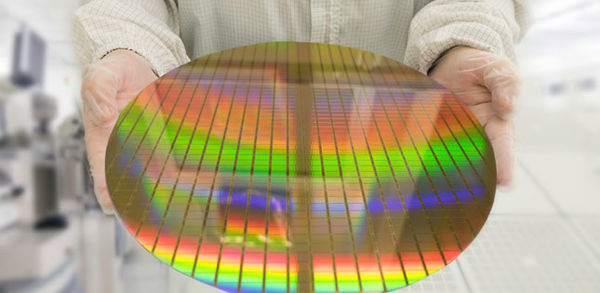
Researchers develop 128Mb STT-MRAM with world's fastest write speed for embedded memory
"A research team, led by Professor Tetsuo Endoh at Tohoku University, has successfully developed 128Mb-density STT-MRAM (spin-transfer torque magnetoresistive random access memory) with a write speed of 14 ns for use in embedded memory applications, such as cache in IOT and AI. This is currently the world's fastest write speed for embedded memory application with a density over 100Mb and will pave the way for the mass-production of large capacity STT-MRAM. STT-MRAM is capable of high-speed operation and consumes very little power as it retains data even when the power is off. Because of these features, STT-MRAM is gaining traction as the next-generation technology for applications such as embedded memory, main memory and logic. Three large semiconductor fabrication plants have announced that risk mass-production will begin in 2018. As memory is a vital component of computer systems, handheld devices and storage, its performance and reliability are of great importance for green energy solutions." [...]

What causes the sound of a dripping tap - and how do you stop it?
"Scientists have solved the riddle behind one of the most recognisable, and annoying, household sounds: the dripping tap. And crucially, they have also identified a simple solution to stop it, which most of us already have in our kitchens. We were all surprised that no one had actually answered the question of what causes the sound. Anurag Agarwal Using ultra-high-speed cameras and modern audio capture techniques, the researchers, from the University of Cambridge, found that the ‘plink, plink’ sound produced by a water droplet hitting a liquid surface is caused not by the droplet itself, but by the oscillation of a small bubble of air trapped beneath the water’s surface. The bubble forces the water surface itself to vibrate, acting like a piston to drive the airborne sound. In addition, the researchers found that changing the surface tension of the surface, for example by adding washing-up liquid, can stop the sound." [...]

Physicists record "lifetime" of graphene qubits
"First measurement of its kind could provide stepping stone to practical quantum computing. Researchers from MIT and elsewhere have recorded, for the first time, the “temporal coherence” of a graphene qubit — meaning how long it can maintain a special state that allows it to represent two logical states simultaneously. The demonstration, which used a new kind of graphene-based qubit, represents a critical step forward for practical quantum computing, the researchers say. Superconducting quantum bits (simply, qubits) are artificial atoms that use various methods to produce bits of quantum information, the fundamental component of quantum computers. Similar to traditional binary circuits in computers, qubits can maintain one of two states corresponding to the classic binary bits, a 0 or 1. But these qubits can also be a superposition of both states simultaneously, which could allow quantum computers to solve complex problems that are practically impossible for traditional computers." [...]
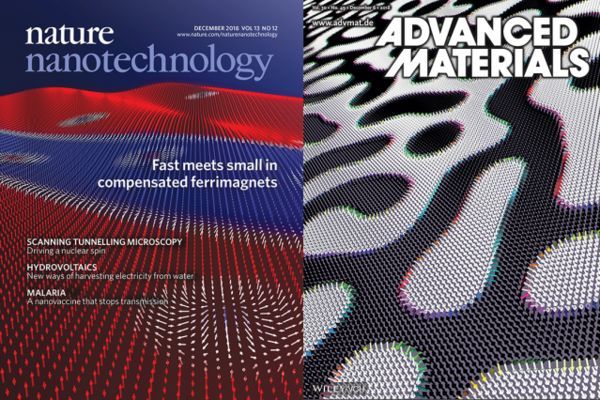
Controllable fast, tiny magnetic bits
"MIT researchers show how to make and drive nanoscale magnetic quasi-particles known as skyrmions for spintronic memory devices. For many modern technical applications, such as superconducting wires for magnetic resonance imaging, engineers want as much as possible to get rid of electrical resistance and its accompanying production of heat. It turns out, however, that a bit of heat production from resistance is a desirable characteristic in metallic thin films for spintronic applications such as solid-state computer memory. Similarly, while defects are often undesirable in materials science, they can be used to control creation of magnetic quasi-particles known as skyrmions. In separate papers published this month in the journals Nature Nanotechnology and Advanced Materials, researchers in the group of MIT Professor Geoffrey S.D. Beach and colleagues in California, Germany, Switzerland, and Korea, showed that they can generate stable and fast moving skyrmions in specially formulated layered materials at room temperature, setting world records for size and speed." [...]
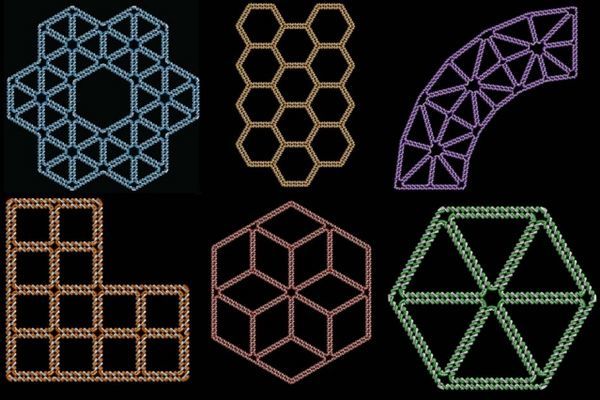
DNA design that anyone can do
"Computer program can translate a free-form 2-D drawing into a DNA structure. Researchers at MIT and Arizona State University have designed a computer program that allows users to translate any free-form drawing into a two-dimensional, nanoscale structure made of DNA. Until now, designing such structures has required technical expertise that puts the process out of reach of most people. Using the new program, anyone can create a DNA nanostructure of any shape, for applications in cell biology, photonics, and quantum sensing and computing, among many others. “What this work does is allow anyone to draw literally any 2-D shape and convert it into DNA origami automatically,” says Mark Bathe, an associate professor of biological engineering at MIT and the senior author of the study. The researchers published their findings Jan. 2 in Science Advances, and the program, called PERDIX, is available online." [...]
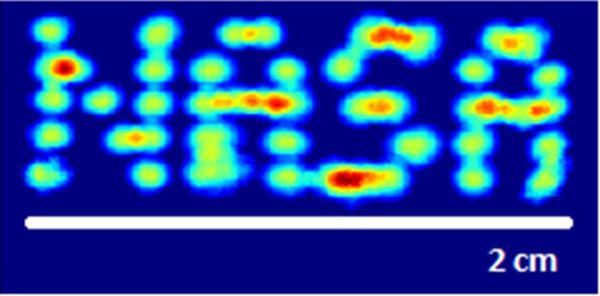
NASA-Industry Team Creates and Demonstrates First Quantum Sensor for Satellite Gravimetry
"NASA and the Sunnyvale, California-based AOSense, Inc., have successfully built and demonstrated a prototype quantum sensor capable of obtaining highly sensitive and accurate gravity measurements — a stepping stone toward next-generation geodesy, hydrology, and climate-monitoring missions in space. The prototype sensor, developed in collaboration with NASA’s Goddard Space Flight Center in Greenbelt, Maryland, employs a revolutionary measurement technique called atom interferometry, which former U.S. Energy Department Secretary Steven Chu and his colleagues invented in the late 1980s. In 1997, Chu received the Nobel Prize in Physics for his work. Since the discovery, researchers worldwide have attempted to build practical, compact, more sensitive quantum sensors, such as atom interferometers, that scientists could use in space-constrained areas, including spacecraft. With funding from NASA’s Small Business Innovation Research, Instrument Incubator, and Goddard’s Internal Research and Development programs, the Goddard-AOSense team developed an atom-optics gravity gradiometer primarily for mapping Earth’s time-varying gravitational field. Although Earth’s gravitational field changes for a variety of reasons, the most significant cause is a change in water mass." [...]
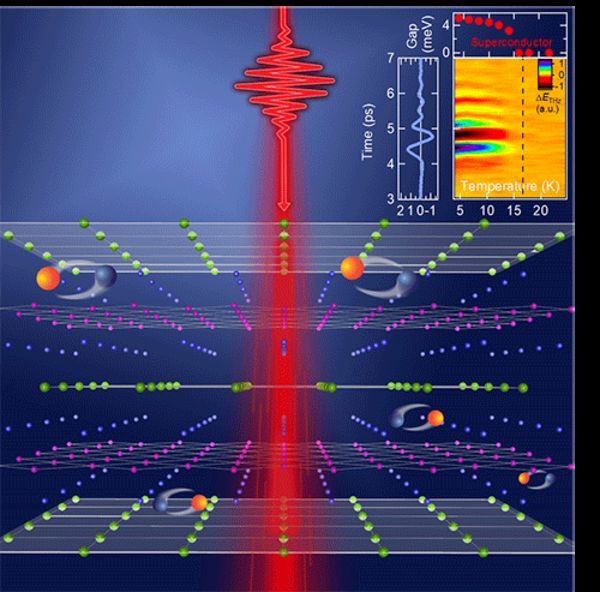
Physicists uncover new competing state of matter in superconducting material
"A team of experimentalists at the U.S. Department of Energy’s Ames Laboratory and theoreticians at University of Alabama Birmingham discovered a remarkably long-lived new state of matter in an iron pnictide superconductor, which reveals a laser-induced formation of collective behaviors that compete with superconductivity. “Superconductivity is a strange state of matter, in which the pairing of electrons makes them move faster,” said Jigang Wang, Ames Laboratory physicist and Iowa State University professor. “One of the big problems we are trying to solve is how different states in a material compete for those electrons, and how to balance competition and cooperation to increase temperature at which a superconducting state emerges.” To get a closer look, Wang and his team used laser pulses of less than a trillionth of a second in much the same way as flash photography, in order to take a series of snapshots. Called terahertz spectroscopy, this technique can be thought of as “laser strobe photography” where many quick images reveal the subtle movement of electron pairings inside the materials using long wavelength far-infrared light. “The ability to see these real time dynamics and fluctuations is a way to understanding them better, so that we can create better superconducting electronics and energy-efficient devices,” said Wang. The research is further discussed in a paper, “Non-equilibrium Pair Breaking in Ba(Fe1-xCox)2As2 Superconductors: Evidence for Formation of Photo-Induced Excitonic State,” authored by X. Yang, L. Luo, M. Mootz, A. Patz, S. L. Bud’ko, P. C. Canfield, I. E. Perakis, and J. Wang; and published in Physical Review Letters." [...]

Lighting the way to the underwater Internet of things
"Working under the ocean is very difficult, even for automated machines, but a KAUST team is making great strides with an optical system for monitoring sensor locations. Extensive networks of underwater sensors—some attached to the seabed, some suspended in the water and some on floating surface buoys—are proposed by Nasir Saeed, working with Professors Tareq Al-Naffouri and Mohamed-Slim Alouini from the Department of Electrical Engineering. In their latest work, the team tackles the sensor localization problem—monitoring the positions of sensors in an ever-changing 3D ocean environment, where surface tools, such as a global positioning system (GPS), do not work. The team has ambitious plans to develop underwater wireless sensor networks to assist with biological sampling, offshore exploration and disaster management. But building such networks is hugely difficult, with one of the biggest challenges being to simply keep track of where the sensors are. The team investigated how sensors could measure their relative positions by sending optical light signals to one another." [...]

Scientists move quantum optic networks a step closer to reality
"A crucial step has been achieved in understanding quantum optical behavior of semiconductor nanomaterials. Scientists have moved quantum optic networks a step closer to reality. The ability to precisely control the interactions of light and matter at the nanoscale could help such a network transmit larger amounts of data more quickly and securely than an electrical network. A team of researchers at the U.S. Department of Energy’s (DOE) Argonne National Laboratory, the University of Chicago and Northwestern University have successfully surmounted the significant challenges of measuring how nanoplatelets, which consist of two-dimensional layers of cadmium selenide, interact with light in three dimensions. Advances in this area could enhance the operation of quantum optic networks. “In order to integrate nanoplatelets into, say, photonic devices, we have to understand how they interact with light or how they emit light,” noted Xuedan Ma, nanoscientist at the Center for Nanoscale Materials (CNM), a DOE Office of Science User Facility at Argonne." [...]
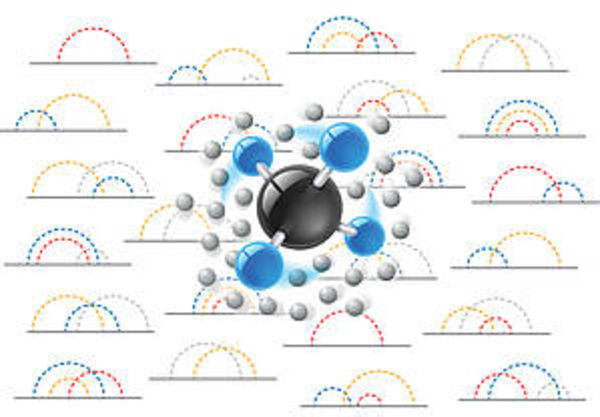
Description of rotating molecules made easy
"nterdisciplinary team of scientists develops a new numerical technique to describe molecules in solvents Feynman diagrams are a powerful tool in condensed matter physics. By turning highly complex equations into sets of simple diagrams, the method has established itself as one of the sharpest tools in a theoretical physicist’s toolbox. Giacomo Bighin, a postdoc in the group of Mikhail Lemeshko at the Institute of Science and Technology Austria (IST Austria), has now extended the Feynman diagram technique: originally devised for subatomic particles, the simplest objects imaginable, the technique can now work with molecules, far more complex objects. The research, which was published in the journal “Physical Review Letters”, is expected to drastically simplify the description of molecular rotations in solvents. This brings scientists one step closer to their long-term goal of understanding chemical reactions in solvents at the microscopic level and, potentially, controlling them. Sometimes when you’re stuck on a problem, the solution could be closer than you think, for instance in a different area of the research field you are working in." [...]
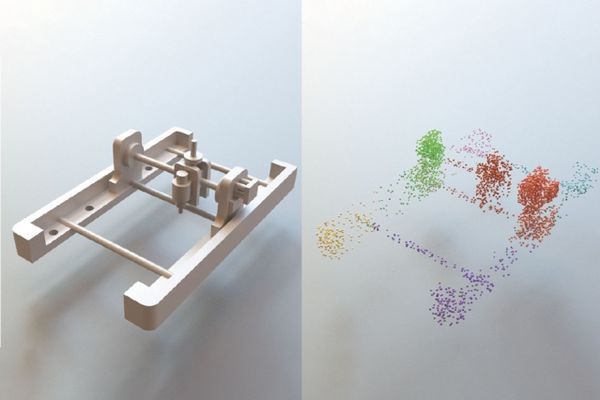
Customizing computer-aided design
"System breaks down complex designs into easily modifiable shapes for custom manufacturing and 3-D printing. MIT researchers have devised a technique that “reverse engineers” complex 3-D computer-aided design (CAD) models, making them far easier for users to customize for manufacturing and 3-D printing applications. Nearly all commercial products start as a CAD file, a 2-D or 3-D model with the product’s design specifications. One method that’s widely used to represent today’s 3-D models is constructive solid geometry (CSG), a technique where numerous basic shapes, or “primitives,” with a few adjustable parameters can be assembled in various ways to form a single object. When finalized, the compiled digital object is converted to a mesh of 3-D triangles that defines the object’s shape. These meshes are used as input for many applications, including 3-D printing and virtual simulation." [...]
Modelos 3D
Com a disponibilidade de ferramentas que permitem dar azo a nossa imaginação na criação de peças 3D e espaços como o thingiverse para as publicar, esta rubrica apresenta alguns modelos selecionados que poderão ser úteis.

Customizable ventilation grid
"This ventilation grid is a remix of Thing https://www.thingiverse.com/thing:3115753 I added the possibility to change the witdh in addition, not just length and diameter. Now its possible to create also rectangular ventilation grids in a wide range of grids and sizes. Also I changed the parameter names to english and added the valid parameter range to each parameter. Version2 works better together with the Thingiverse customizer. It also uses clearer naming of the variables. In addition V2 outputs errors on the console, if parameters are out of range." [...]
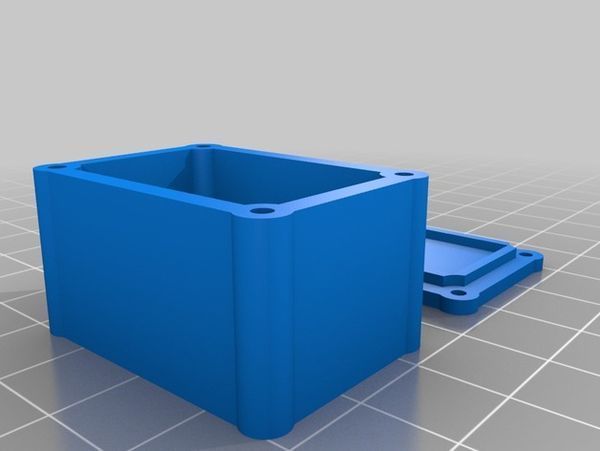
Customizable Case with Screws
"Simple Case Generator Creates a Case with given inner dimensions and screw bores. Use with standard wood screws and measure inner diameter of the screw. Updated Version now supports screws on the inside, simply set offset to a negative value: e.g . -2. Useful for electronics. See also https://www.thingiverse.com/thing:3323239 for a version with support for holes." [...]
Projetos Maker
Diversos Projetos interessantes.
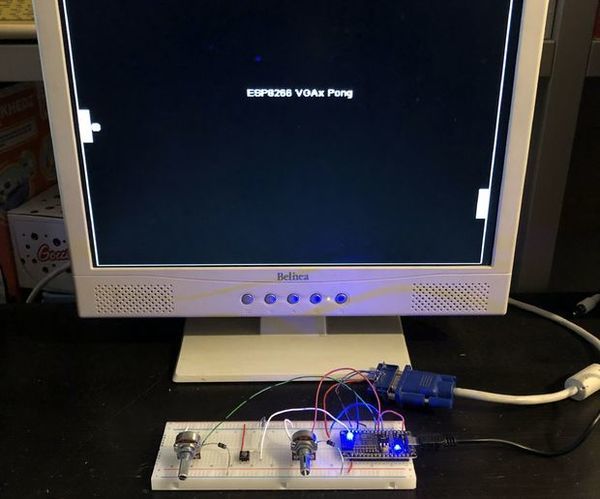
ESP8266 VGA Pong
"In this Instructables I will show how to build a reproduction of the the classic game Pong for a VGA monitor, using a ESP8266 and few other components. This game is made possible by the EspVGAx library recently published on GitHub by Sandro Maffiodo (aka Smaffer) and, as far as I know, this is the first game exploiting it. The library implements a resolution of 512 x 480 pixels, stored in a framebuffer inside the RAM, which requires 30720 bytes. The resolution is huge in comparison to the Arduino TVout or VGAx ones (128 x 96 and 120 x 60 pixels respectively). I hope this game inspires other programmers to develop or reproduce more complex games. " [...]
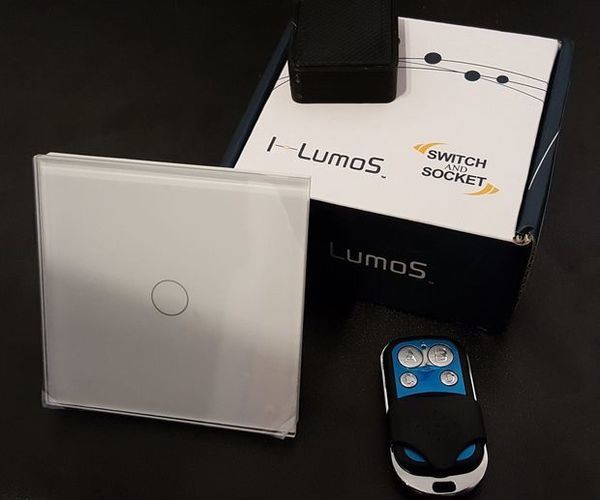
ILumos Remote Control
"The iLumos range of smart light switch and dimmers work very nicely. They install easily into UK as they don't require a neutral connection which is often not present in UK lighting switch points. They use 433MHz transmissions from their remote controls as well as having the touch sensitive controls on their face plate. If one wants to control them from an App or to use voice control like Alexa then the recommended method is to use a Broadlink RM controller which can transmit either IR or 433MHz rf messages. As the protocol is not built in then one has to train the Broadlink product to learn the remote control signals. It is difficult to do this training and even when apparently successful it does not produce a reliable result." [...]
WiFi Controlled Robot Using ESP8266
"In this Instructable I will be sharing how to make a simple Robot using ESP8266 as the brain.This robot can be remotely controlled using Android Remote LITE app or using a web browser.We will be using RemoteMe servers to achieve remote connection. As always I will try to keep it as simple as possible. I recommend you read this post to lean about RemoteMe. So lets get started... " [...]
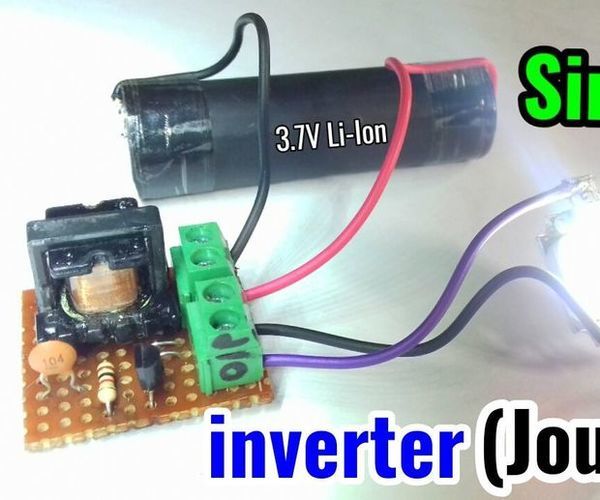
Single Cell LED Inverter (Joule Thief)
"This is a simple inverter circuit or driver provides power for different types of LEDs (eg- white LED, blue LED, UV LED, but also any other LED) from 1.2 Volt or 3.7 Volt single cell or Lithium-ion battery. But the LED starts to shine when the supply voltage is only 0.4 Volt You can use low batteries (that are useless for any other equipment). Voltage drop of a LED diode is approximately 3 Volt (but in this project i used 12 volt, 5 watt LED and voltage drop approximately 7.4 volt), so it is necessary to use a boost inverter circuit or driver. The circuit is very simple and it works on the principle of self oscillating inverter. " [...]

3D Printed $15 Camera Slider
"About three years ago I build myself a motorized camera slider. I didn't have a 3D printer at that time so I used some old inkjet printer parts and LEGO :) Surprisingly it still works, but not as good as I want too. It's quite big and doesn't look nice. When I was making it that was a big project for me, I designed a sophisticated PCB that I made at home and instead of Arduino, I programmed an atmega with Eclipse in C. I used it in some of my videos, but traveling with it is a pain, setting it up takes some time and you need a big 12V battery. I have a 3D printer for quite some time now and I decided it's time to go back to camera slider and make it better :) The First idea was to use a NEMA17 stepper motor to create a motorized camera slider, but it's too big. I thought about using a geared DC motor, but you can't control it as precisely as I would like to." [...]
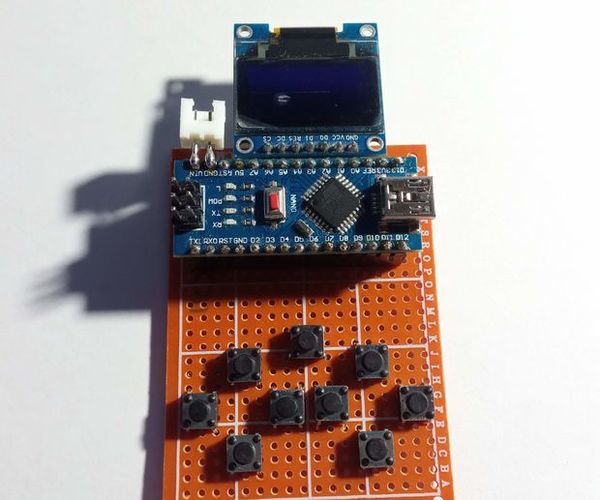
Arduino Based Handheld Game Console
"I made this handheld a year ago. Now I want to share this project if someone else would like to build it. First step is to build the hardware. This design is really simple. All you need is an Arduino, screen and 9 buttons. Here's the list of all parts: prototyping PCB (with dotted copper) Arduino Nano SSD1306 OLED-screen with SPI-interface 9 pcs of 6x6x6 mm buttons Female headers if you want to reuse the Arduino and OLED Wires to connect the pins Soldering stuff for soldering (obviously) Rechargeable battery (If you want, it isn't necessary." [...]

Robot Car Controlled by Hand Motions
"Introduction: For our final project in ECE 4760: Design with Microcontrollers, we decided to explore the concept of controlling a vehicle with the user’s hand orientation relative to the ground. By the end of the semester, we designed a cheap and effective hand controlled vehicle using the PIC32 microcontroller. This project is comprised of two main parts, the physical vehicle and the user controls. The physical vehicle consists of two rear wheels on the chassis which are controlled by a single motor, and the front wheel is controlled by a servo. The rear wheels serve to control forwards and backwards motion while the front wheel enables the user to move side to side. Attached to the top of the chassis is the slave mode bluetooth module, which will receive the hand orientation data from the accelerometer, and transmits to the PIC32 board will output the appropriate movement commands." [...]
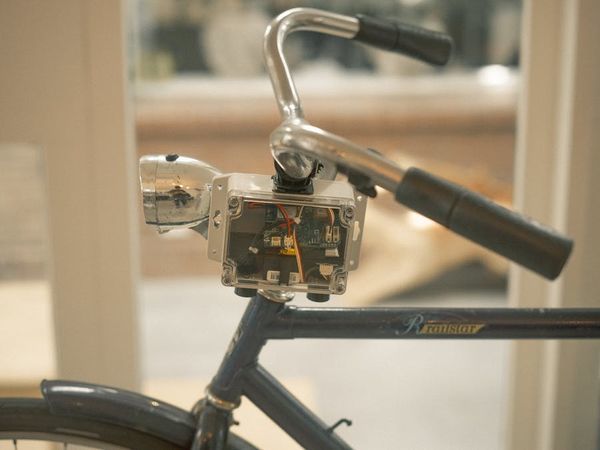
SODAQ NB-IoT Sniffer Bike
"You can now bike around and monitor the air quality around you! Story The SODAQ Sniffer Bike is an open-source collaboration project with Civity and Provincie Utrecht in the Netherlands. The idea is to raise awareness of the public on the air quality in the environment they live in. We design this sensor to be attachable to any bikes so that it is effortless for anyone to use. The rising concern to air pollution also plays a major part on why we are in the interest of developing this project (World Economic Forum). We envision this project to perpetuate to a much greater scale such that the public can be more aware of what is happening in the environment." [...]
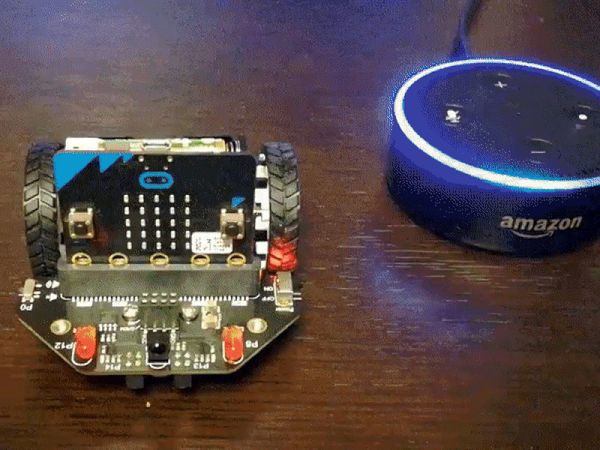
Voice Controlled Robot Car
"I made voice controlled robot car using Amazon Alexa, Node-RED and micro:bit. Story I made voice controlled robot car using Amazon Alexa, Node-RED and micro:bit. Constitution Return the speech response to Amazon Echo via Node-RED Alexa Home Skill Bridge to Node-RED on Raspberry Pi Zero W, and send a signal to micro: bit on BLE. Micro:bit is mounted on the extended mini robot car Maqueen and receives signals to move it. " [...]
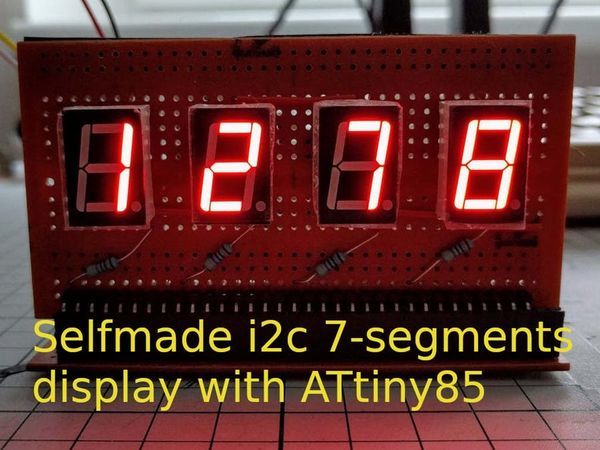
Selfmade I2C 7-Segment Display with ATtiny85
"An I2C device that uses common anode 7-segment displays. " [...]

Speak to Arduino and Control It with Google Assistant
"How to make a connection between an internet service and Arduino boards. Story In this project, we’ll Learn how to make a connection between an internet service and Arduino boards. At the end of this article, you will: know how to get data from Google Assistant know how to use IFTTT protocol be familiar to webhooks and http requests be able to speak to your Arduino" [...]

Persistence of Vision (POV) Globe
"Today I will tell you about a new project, a POV globe. Hi makers, Today I will tell you about a new project, a persistence of vision (POV) globe. A quick intro to POV or persistence of vision: Any AC voltage light is actually blinking on and off at a frequency of 60hz or 60 times per second. Our brains perceive this as constant light. It is this concept which we will be taking advantage of, in order to create a spherical image using a single row of LEDs. We used 58 LED for each half." [...]
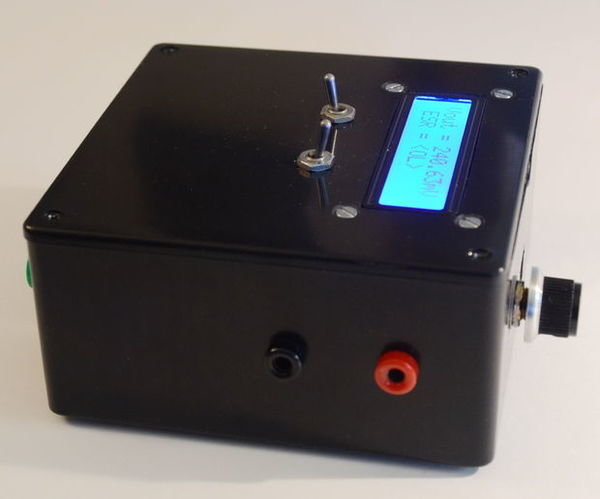
Arduino CAP-ESR-FREQ Meter
"CAP-ESR-FREQ meter with an Arduino Duemilanove. In this instructable you can find all neccessary information about making a metering instrument based on an Arduino Duemilanove. With this instrument you can measure capacitor values in nanofarads and microfarads, the equivalent serie resistance (ESR value) of a capacitor and last but not least frequencies between 1 Herz an 3 MegaHerz. All three designs are based upon descriptions I found on the Arduino forum and on Hackerstore. After adding some updates I combined them into one instrument, controlled with just one Arduino ino program. The different meters are selected via a three position selector switch S2, connected to pins A1, A2 and A3." [...]

Pull and Ambiently Display Data From Any Website Over Wifi (Northern Lights Indicator) With NodeMcu
"My Motivation: I have seen LOTS of instructables on setting up/ using a NodeMCU (built on the ESP8266 module) for making IoT (internet of things) projects. However, very few of these tutorials had all the details/ code/ diagrams for a very novice person to follow start to finish, and none of them did exactly what I wanted. What will this cover? : This will cover everything you need to know (and that I didn't), including: Materials (what I used, specifically) Arduino, NodeMcu, ESP8266, what's the difference? Getting started with the NodeMcuSetting up the software (Arduino IDE) Making an LED blink Options for powering the NodeMcu Connecting to the internetHow to pull data from a website "Pointing" to the info you want in the website Thingspeak/ ThingHTTP/ APIs (don't be scared, no coding necessary) Accessing this data from the NodeMCUDisplaying the data What I used (how to wire a 7 segment display) Some ideas/ things I would have done with more timeHow to build a box I guessDISCLAIMER: I watched LOTS of videos to learn how to make this, and almost all of the code is pieced together from other sources and I can't remember all of them. The main source of thinghttp inspiration was this guy who is essentially doing the same thing I'm describing, but I found sifting through what was touch screen stuff and what wasn't confusing." [...]

Varmint Detector
"Using Eagle, the PCB I designed is a Varmint Detector. Varmint: noun, North American informal - a troublesome wild animal. In my case, crows and chipmunks attacking our garden. They really arent much of a problem, this is just my excuse to build a solar powered device. Varmint Detector is a solar powered motion activated MP3 player for scaring animals out of a garden. Scenario: animal moves in front of the detector, detector makes noise, detector triggers other detectors, lots more noise, animal flees." [...]
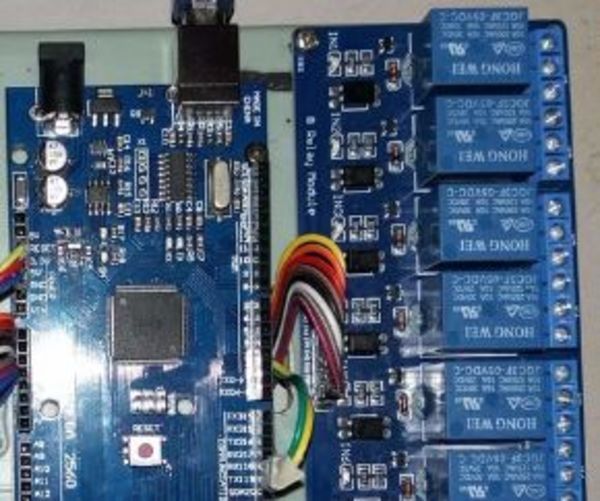
DIY HOME AUTOMATION - Replace Traditional Light Switches
"Turn on or off LIGHTS using touch sensors Features: Capacitive touch sensors are used to turn on the lights instead of traditional mechanical switches.PIR Sensors for automated lights. " [...]
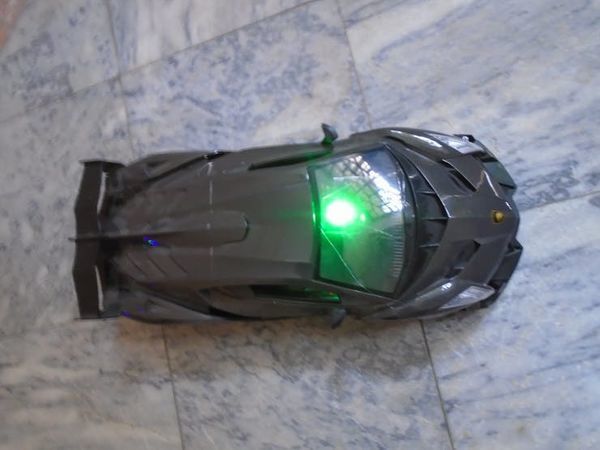
High Speed Arduino RC car
"You will learn how I converted an RC car from my childhood days to an Arduino-based RC car. Story A few days back, I found out a beautiful RC car from my childhood days but its remote was broken so I thought that why not convert this car into a High Speed Arduino RC car. So here it is now, I have converted it into a High Speed Arduino RC car and today I am going to share with you that how I did that. The app I have used for this project can be downloaded from here. Also do suggest me in the comment section that which things you want me to add in this car for future. Functions of High Speed Arduino RC car The functions this High Speed Arduino RC car are as following - Front lights - Back lights - RGB light in center will make it look good - Horn - Rotation in all directions - Speed control Required Components The components required for High Speed Arduino RC car are as follows - Old Car with Motors - Arduino Uno - HC-05 or HC-06 Bluetooth Module - L298N Motor driver - Buzzer - RGB LED - 2 X Red LED’s - 2 X White LED’s - 2 X Rechargeable cells of 3.7V - 9V battery - 7 X 220 ohm resistors Hardware I have used two rechargeable cells of 3.7V each to run these motors." [...]
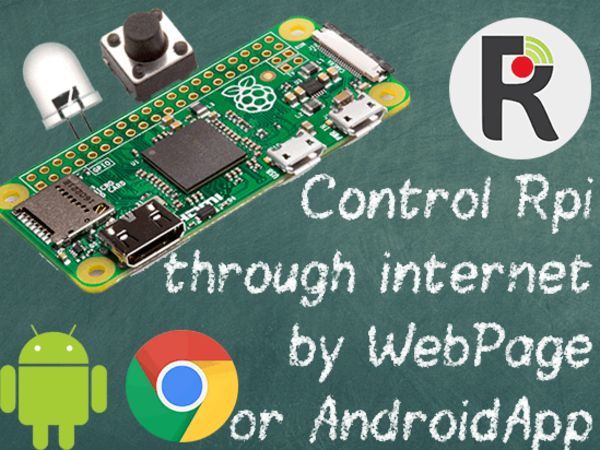
Control Raspberry Pi Pins Over the Internet
"A 10-minute tutorial on how to control Raspberry Pi pins over the Internet. It's very simple example to shows how to start. To Raspberry Pi we have attached LED. LED state is controlled by website or by mobile application. To Raspberry Pi we have also attached button which changed state to opposite a button on the site. Android Application (It's not mandatory if you don't need Android app." [...]
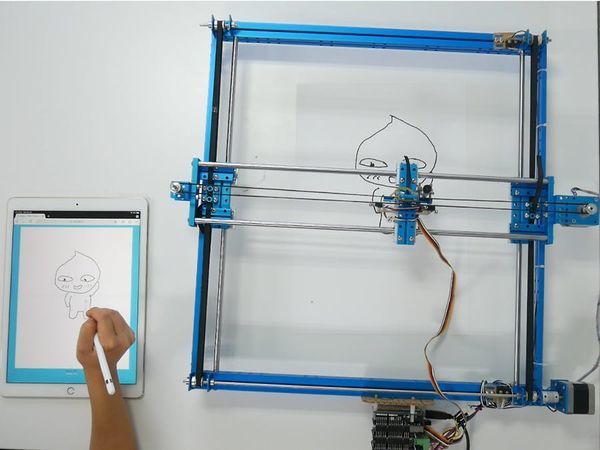
Arduino - Drawing via Web Using Step Motor Controller
"When drawing on web, the drawing will be sent to XY plotter to re-draw it on bigger screen. How It Works When a finger touches to the drawing area in webpage, the XY coordinate of touching point is sent to Arduino. After scaling the coordinate, Arduino will move two step motors to locate the pen to that coordinate. During moving period, Arduino continuously send trajectory of the pen to web app, the web app draw the trajectory on the canvas. Source Code Source code includes two parts: Arduino code and Web User Interface code. Arduino Code This is arduino code, which run in infinite loop to: - Receiving the command from web-page and do task according to the command." [...]
Neopixel Controller Over WiFi Using ESP-03
"This instructable is about creating wifi controlled over Blynk app neopixel LEDs known as WS2812B or WS2812. You must be already familiar with: - soldering - using hot air station - programming ESP using Arduino IDE - programming ESP using ready to use code - have some knowledge about ESP 8266 - how to replace orignal flash memory chip with winbond 25q32fvsig - examples on the Internet - for example here https://www.youtube.com/watch?v=7Q6ABad7U6o - using Blynk app and know how to set it up - plenty of examples on the internet" [...]
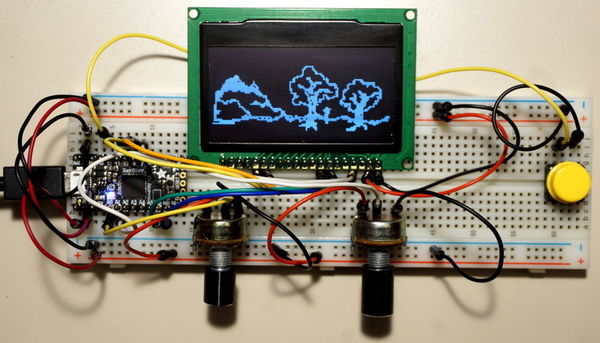
CircuitPython OLED and Dual Knob Sketcher Two trim pots and a microdisplay!
"In this guide we will create a simple knob sketcher toy using a graphical display and two potentiometers, also known as trim pots or just pots. We'll go over the basic idea of drawing a pixel to the display as well as how to use the pots to generate a variable voltage. The two concepts will be put together to create a couple different variations of a knob sketcher toy. Parts This guide uses an Adafruit ItsyBitsy M4 Express as the main board. However, you could adapt this to other boards that run CircuitPython and have the available pins. You might need to change the example code to match the pins for your board." [...]
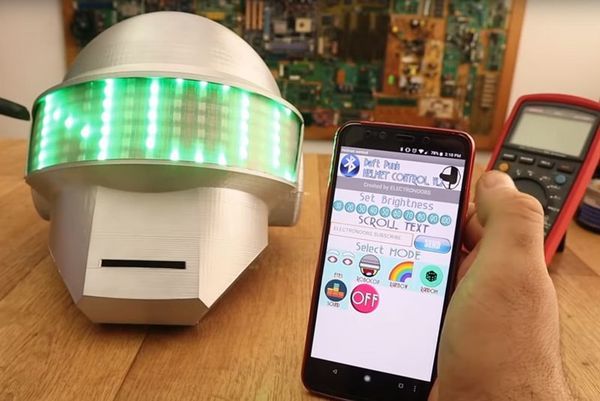
Daft Punk Helmet Bluetooth RGB Strip
"This is a very simple project that uses the Adafruid library to control a RGB adressable LED strip that will eb inside of a Daft punk Helmet. In this tutorial you will find the STL files to 3D print the plastic helmet, the schematic for the LED control with Bluetooth and the Android App that I've made to control it. All the information is below. Let's start. " [...]
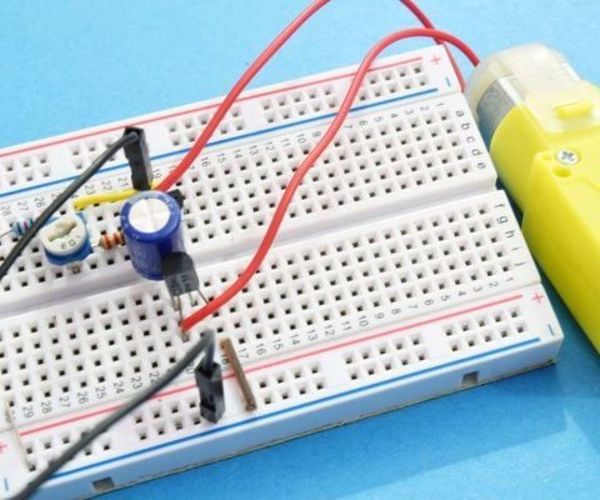
PWM Controller Using Transistors
"When designing RC Cars, Robots or any project that makes use of a motor it is essential to have to control the speed of the motor. For this you need a PWM motor controller, there are a ton on motor controllers in the market but designing your own controller is what makes electronics fun. So this instructable I'm going to show you How to build a motor speed controller using inexpensive transistors. " [...]
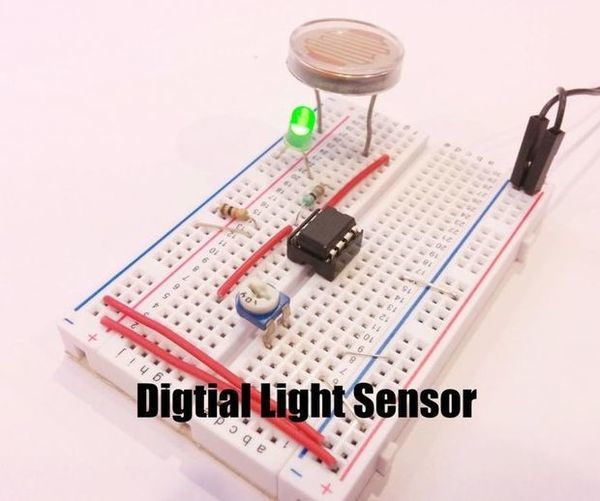
Digital Light Sensor Using LM358
"Sensors make working with any project fun and simple to do, there exist thousands of sensors and we get the choice to choose the right sensor for our projects or needs. But nothing is better than designing your own DIY sensors to work with a wide range of micro-controllers so you have the exact design you need for your project. This instructable will be a part of a series of Instructables in which I show you how to build sensors compatible with the most microcontroller you can find. In the last two Instructables, I showed you how to how to make a Tilt sensor, Vibration sensor and how to make a Touch sensor. In this instructable, I'm going to show you How to design your own light sensor, which could be used as a day and night switch or as a part of a security system. " [...]
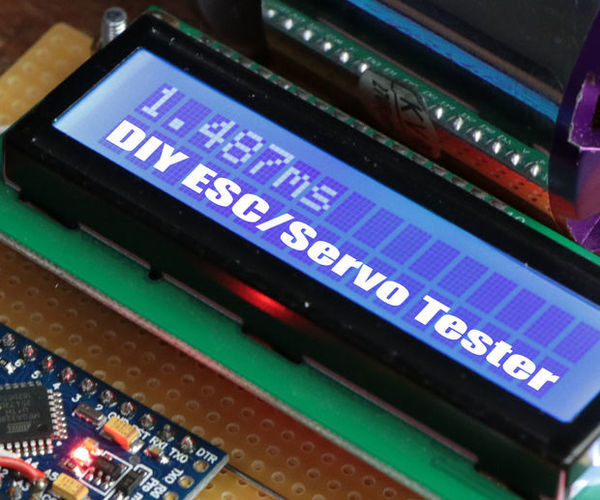
Make Your Own ESC/Servo Tester
"In this small project I will show you how to build a custom ESC/Servo Tester. Along the way I will show you how to setup the timer of the ATmega328P in order to create the required control signal. At the end I will then add tactile switches, a potentiometer and an LCD to adjust the control signal easily. Let's get started! " [...]
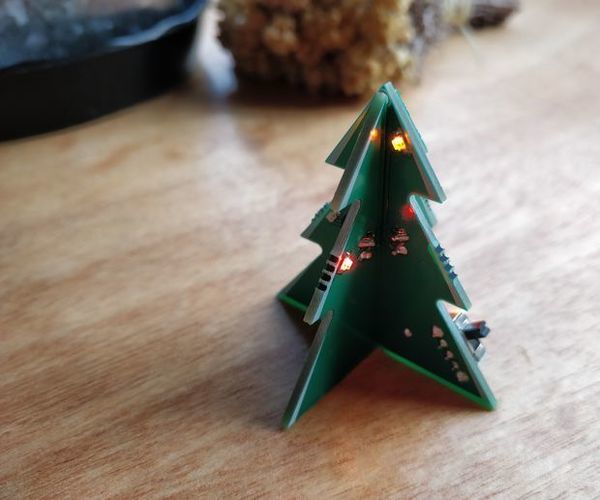
$1 PCB Christmas Tree
"When Christmas is coming, what can an electronics lover do ? A PCB Christmas tree of course ! As a member of a small electronics hobbyists club, I like to share my passion for electronics and PCB design through small projects. For Christmas, I wanted to introduce SMD soldering universe to new members with a fun and simple project: solder a miniature PCB Christmas tree with embedded 0805 SMD flashing leds. This instructable describes the process I followed to imagine, design and create a bunch of cheap, small, glowing Christmas trees on printed circuit boards for less than $1 the unit. Enjoy :)" [...]
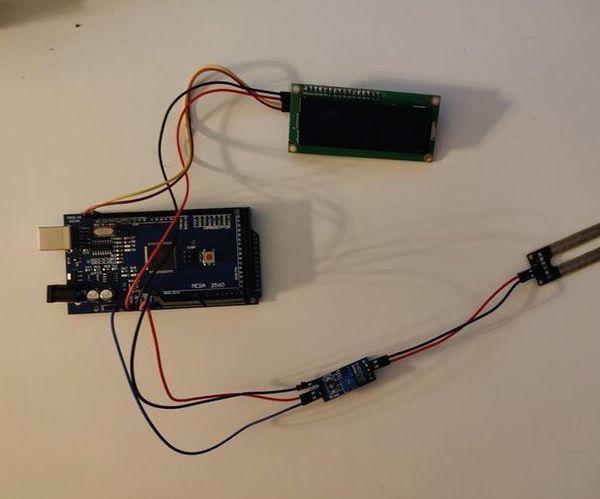
UCL - IIoT - Moisture Data Collector
"This instructable, will provide you with the infomation on the moisture from dirt, which will be able to be viewed on a UI with node-red, furthermore will data be collected and put in a MySQL database, this can help you learn the watering patterns for your plants, learning when they are gonna need water. " [...]

NAS (Network Attached Storage) Using Raspberry Pi
"Network-attached Storage or NAS for short is a really good device to have if you are dealing with a large number of files and data. I have so much of my work-related content on my PC Internal HDD that it leaves not much room for my personal data, so I usually store them on an external HDD, but each time someone in my family needs any file or photos I have to plug in and copy files from my HDD. To solve this I decided to use a Raspberry Pi 3 I had, this would make a cheap NAS device and it is easy to set up too. So in this instructable, I'm going to show you How to create a NAS using the Raspberry Pi. " [...]

How to Make Remote Control Scorpion
"Remote Control toys are one of the most common toys available in the market. They are so wonderful and fascinating gadgets that they appeal to the people of all age groups. Today, it is very simple to make a RC toy just by assembling few parts purchased over an online store but I wanted to make an RC toy by recycling few old stuff that i already had at home. In this Instructable, I will show you how to make Remote Control Scorpion at home by recycling an old PC mouse. It is a fast moving wireless Remote control scorpion made of an old mouse, two DC motors, a wireless receiver and cardboard. So, Lets get Started...." [...]
NeoPixel Animation with Gestures
"In this tutorial we're going to play with a gesture sensor and a NeoPixel ring to learn how to combine them both using an Arduino. Story In this tutorial, we're going to play with a gesture sensor (APDS-9960) and a NeoPixel ring to learn how to combine them both using an Arduino UNO. The end product will respond to left - right gestures by animating LED movement right or left, and to up-down gestures by changing LED's color. In the next steps, you'll briefly overview the part list and how to connect the components. And then we'll review the code step by step to learn how it works. Before you'll get started make sure you have all the components on you're table." [...]

WS2812B Reducing Power Consumption.
"The drivers on WS2812B addressable neopixels are drawing current even when the neopixels are off, set to color 0 (no neopixels elements lit).Under 1 milliamp per pixel, but with lots of pixels this could add up. It's also not so much compared to the current when they're active but certainly a major concern for a battery powered device. " [...]
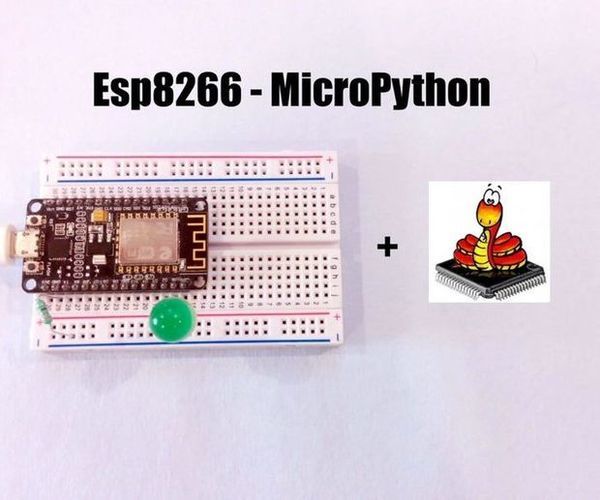
Program ESP8266 - MicroPython
"MicroPython is a project that allows you to run a miniature version of python 3 on microcontrollers and embedded boards. It has growing support of microcontroller boards and rather than installing a full Linux distro onto the board it only gives a minimized version of python with respect to the board, with a python shell and you can upload small python files on to the board and run it. In this instructable I will be showing you how to use MicroPython on a NodeMCU, the NodeMCU is a development board based on esp8266-12. " [...]

RUN & JUMP Arduino Game Using LCD
"The Arduino is a really easy way to get started in electronics, it is simple to design a circuit around the arduino boards and easy to program using the arduino IDE. The Arduino may not be as powerful as the Raspberry Pi or Intel Edison but it is cheap and easy to design projects. The arduino can be connected to different types of LCD displays and OLED displays, this gives the possibility of a large number of projects that display the sensor outputs on the LCD or OLED. But what's more is that these displays even support low resolution graphics which enable us to design low resolution pictures and even sprites and objects for games. In this instructable, I'm going to show you How to build an arduino powered low resolution game with sprites and objects. The game is simple and involves running and jumping over objects or walls by clicking a button." [...]

Arduino Nano - 8 Digit Segment Display
"The MAX7219 is a popular serial LED driver that is popularly used with micro-controllers and Arduino community has a built-in library, which makes easy to work with it. The MAX7219 works with Dot Matrix Display's and Seven Segment Display's and you can connect multiple of them in a chain to create a bigger display, by just simply using up only 3-pins of the Arduino. In this Instructable, I'm going to show you How to get started Seven Segment Display with the MAX7219 IC. " [...]
GPS Tracking System with Arduino Uno and Digilent PmodGPS
"This project is a GPS tracking system with LCD display using an Arduino Uno and a Digilent PmodGPS. Story Project Motivation This project is a subsystem of a larger project that I was a part of for my UW Bothell Sensors and Sensor Systems elective class in Autumn 2018. That project can be found HERE. This project will highlight the use of the PmodGPS from Digilent as a position locator and guide to a reference point. This can be helpful for hikers, hunters, or other navigators in situations without signs or other clear location/direction markers. Description This project uses and Arduino Uno microcontroller, PmodCLS LCD screen from Digilent, and the PmodGPS also from Digilent." [...]
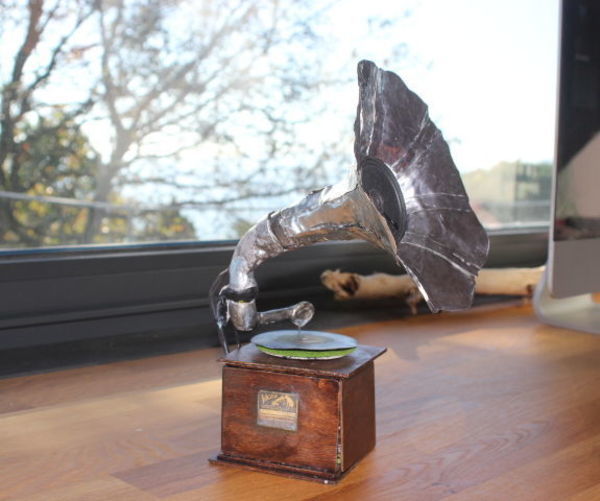
RaspiPhono
"When I started designing a puppet play set (scale 1: 4) in the style of the early twentieth century one, it occurred to me that the protagonist was listening to music from a gramophone. As I really like electronic devices, it occurred to me to turn the gramophone into a kind of MP3 player. You must to use the crank to start the turntable. One turn are 20 seconds. Press the button to change the music (changes the music folder). We can divide the project into two parts: one the gramophone itself, with the box, the horn, the vinyls, and the other part, the electronics to play music (raspberry pi zero, speaker, battery, etc)." [...]

Kindle WiFi Remote Footswitch
"My brother is playing several instruments and has many of his song lyrics and chords saved on his Kindle. It is a very convenient way to have your sheet music ready for live performances with one major downside, you cannot flip pages while your playing an instrument. Since my brother knows I love to build electronic stuff he came up with the task for me to build him a footswitch that he can use to flip pages on his kindle. While this project is mainly targeted at musicians it could also be useful for disabled people who cannot flip pages by hand. Also there are apparently man people who think it is just inconvenient to flip pages using the touchscreen, e.g., when reading in bed. My remote is of course not limited to footswitches but any button could be integrated into the design." [...]

Pipeline Inspection Robot
"Pipeline systems deteriorate progressively over time through various means. Pipeline inspection robot are designed to remove the human factor from labour intensive or dangerous work environments and also to act in inaccessible environment. However, if you take a look at the prices of those robots you will find that they are way too expensive. This project aims to create another kind of pipeline inspection robot. Because we think that It is beneficial to have a robot with an adaptable structure to the pipe diameter, and cheaper at the same time. Our challenge is to make this robot adaptable to diameters varying from 260mm to 390mm based on two sliding mechanisms." [...]

DIY Arduino UNO | How to Make Your Own Arduino Uno Board
"Hello guys, welcome to Being Engineers. Hope you all are doing great. In todays tutorial I will show you how I made my own arduino uno board using the atmega328p IC. A year ago I have made a series of tutorials about homemade DIY arduino. This is kind of a updated version of that. Before starting this let me thank the whole arduino community for the immense support they has provided us throughout the time." [...]

24V TO 48V @ 1.5A STEP-UP DC-DC Converter Using LM2588
"This is another boost DC-DC Converter that provides 48V DC output from 24V DC input with load current up-to 1.5A. The board is very small. Booster is based on LM2588 IC from Texas Instruments. The LM2588 regulator integrated circuit specifically designed for fly-back, step-up (Boost) , and forward converter. Board has minimum components, screw terminal provided for input & outputs. " [...]
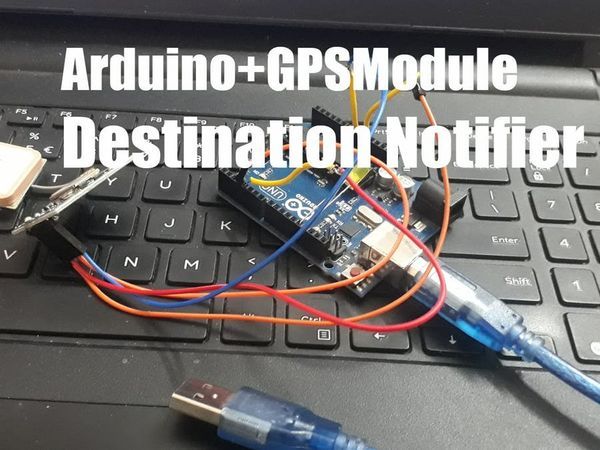
Arduino + GPS Module - Destination Notifier
"How much time do we waste in traffic jams? I made an Arduino-powered destination notifier to utilize this time in a productive way. Everyone knows that traffic jams can be a major time waster. And it is impossible to predict how long it would take from origin to destination. The problem of traffic jams affected me when I came to a city two months ago. Every day I spend more than two hours stuck in jams." [...]

Card Sorter for a Trading Card Machine
"The Background I already explained the motivation of my project in the Card Feeder article. But in short, my children and I have amassed a large amount of Trading Cards by now. The handling, sorting, etc. is very difficult with these quantities. We have already tried it, but we gave up frustrated. For this reason I want to build a Trading Card Machine, which should take on different tasks." [...]
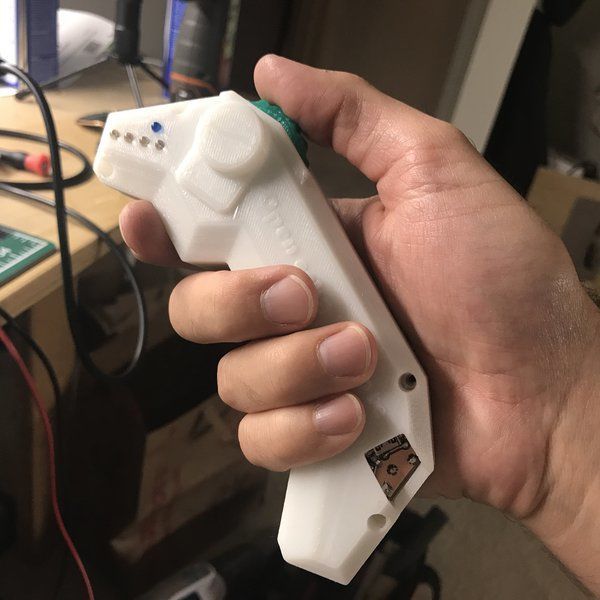
Open esk8 Remote - v1
"Fully open source remote control for common electric skateboards using the NRF24L01+ In June 2018, I bought an electric skateboard. It looked cool in various videos and I was not only eager to learn to ride it but also to replace my car commute to work and the search for the over night parking spot or a parking space during city visits in San Francisco. The project logs of this project capture my adventure of deep diving into reverse engineering an existing protocol, making it my own and getting a fully custom remote control to work with the majority of cheap Chinese electric skateboards using the NRF24L01+ as it's wireless communication chip. " [...]

Police Lights
"How to make police lights with a 555 IC. In this project I will show you how to make police lights. A very simple project which is made with the help of IC 555 timer. Here are steps to make police lights: 1. Connect 555 IC to the breadboard. 2." [...]

PANTILT Camera With ESP32
"Today, I will present the PAN TILT, which is a device that enables the movement of a camera for the directions of up, down, and to the sides. I myself produced this device through 3D printed parts, using two servos and the ESP32, which makes it possible to control this mechanism through WiFi. Let us then take readings using the AD channels of the ESP32, as well as an analog operation using the controller LED_PWM. Also, we apply the control over a TCP / IP connection. In the video, you can see that I have an ESP32 reading the values of the two potentiometers, which are sent (via WiFi) to another ESP32. It is connected to the two servo motors." [...]

RGB Infinity Mirror
"Let's build an RGB infinity mirror! I know there are many instructables that teach how to make an infinity mirror, but I think mine is one of the simplest to build. It's a DIY very easy, you only need the following materials: Frame - You can use any frame as long as it has enough thickness to accommodate the LED strip. I used HOVSTA from IKEA! RGB LED strip - OK, it doesn't have to be RGB, you can use any LED strip, but if you can change color it looks much better! For this project I used a 1m (3ft) USB RGB LED strip with infrared remote control." [...]
That's all Folks!


